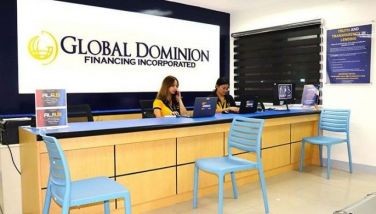Avoiding enterprise storage forklift upgrades
MANILA, Philippines - Almost all enterprises upgrade their high-value technology assets at points in their lifecycle, either to keep pace with technological developments or to accommodate business growth and the increased demand on IT resources that comes with it.
Storage sub-systems and the storage area networks (SANs) they comprise are no different. And with enterprise data growing at very high rates, the upgrade decision now comes more frequently and faster than expected for many organizations.
For a large number of enterprises, accommodating business growth and the corresponding growth in data usually takes the form of scaling up: adding more or larger disks.
Adding raw capacity isn’t enough, though. To improve SAN performance switches and host adapters need to be added, too. For traditional storage systems software, too, needs to be refreshed. When scaling up is no longer an option, enterprises scale out, i.e. add new storage systems (preferably from the same vendor) to the SAN.
Whichever way the upgrade is performed, the capital expense is considerable given that traditional SAN technologies are very expensive to expand. Besides high capital expense, enterprises also need to factor in the manpower costs needed for each upgrade and to manage the now invariably more complex storage environment.
Forklift upgrades no walk in the park
Still, with traditional storage systems, there will come a point (conservative estimate is five years) where field upgrades are no longer possible, or the component technologies in use are fast becoming obsolete. Either way, the point of diminishing return draws near and the enterprise will soon find itself staring at what is called a forklift upgrade.
Much dreaded by IT organizations, a forklift upgrade refers to a major replacement of key IT infrastructure. The term originated from when mainframe computers provided almost all the compute firepower in an enterprise, and the only way to upgrade was to remove the old machine and bring a brand new one in on a forklift.
Best avoided but oftentimes inevitable, a SAN forklift upgrade requires detailed planning and precise execution, with the primary aims being zero-loss data migration, minimal downtime, and quick connection of servers, applications, databases and users to the new storage system.
Data migration alone entails a series of phases. Broadly, these phases are:
• Preparation: Quality of data is audited. If necessary, it is then cleansed. This is followed by a full backup.
• Design: Data on the old storage system is mapped to the new one, providing a design for data extraction and loading.
• Extraction: Data is read from the old system.
• Loading: Data is written to the new system.
• Verification: Tests are performed to determine whether data was accurately translated and is complete.
Downtime, risks, rejig
As can be imagined, each of these phases can take a considerable amount of man-hours (either in-house or third-party). In addition, downtime is needed and, as in all projects that involve moving data, there is always a risk of data loss or corruption.
Besides data, logical and physical connections need to be moved — or new ones made — to the new storage subsystems in the SAN. Here, there may be a need to upgrade or reconfigure existing server hardware and software in order to resolve compatibility issues, or reconfigure and certify application and failover software. The backup system would most likely also need to be tweaked to include the new storage system. In addition, IT staff will need to be trained to administer the new storage environment.
Putting the high capital expense aside, given how inherently disruptive, risky and manpower-intensive a storage forklift upgrade can be, it is no wonder that administrators frequently push their existing storage to the max, sometimes even past the point where it becomes clear that a change is needed. By doing so, they run the risks of equipment failure, performance dips, inadequate capacity for unplanned scenarios, and incomplete backups and restores — all while incurring very high operating expenses.
Things need not be so.
Growing with Dell
As part of its strategy to help enterprises better manage data growth, reduce storage costs and simplify the management of IT infrastructure, Dell offers storage solutions that allow them to avoid forklift upgrades altogether.
“Our Dell EqualLogic and Dell Compellent solutions represent breakthroughs in storage economics. Designed for rapid deployment, simplified administration, enterprise performance and reliability, they’re seamlessly scalable. Using them, enterprises can easily and cost-effectively scale up and out as their storage needs grow, and no longer have to budget for forklift upgrades every few years,” said Edwin Ng, director for storage platform of the Advanced System Group for Asia-Pacific and Japan (APJ).
Engineered to be upgradeable in the field, the Dell storage solutions can be scaled while the system remains online, with data in place during the upgrade process. This eliminates the downtime and risk of data loss or corruption that accompany upgrades of traditional SANs. Unlike with traditional non-virtualized SANs, expanding capacity to Dell EqualLogic and Dell Compellent solutions is simply a matter of adding the most cost-effective drives available, or adding another array. Fewer high-performance drives can be used if the preference is for improved performance.
Keeping a lid on costs
This ability to mix and match when scaling capacity and performance removes risks associated with technology, as well as eliminates downtime and lowers cost. And because capacity can be added so easily, enterprises need to buy only the storage necessary for their current applications. Further savings come from the controllers being able to be upgraded without incurring additional software licensing fees, unlike in traditional storage models. In addition, the software licensing models for the Dell solutions are very budget-friendly: the Dell EqualLogic series come with free future enhancement on software, whereas Dell Compellent systems use a “pay once” perpetual software licensing model.
Together, these enable enterprises to keep a lid on expansion and lifetime costs, at the same time future-proofing their investments. With Dell storage solutions, enterprises do not have to confront forced end-of-life replacement of whole SANs as they grow their business or when component technologies change.
Slumberland Furniture experience
The experience of American furniture retailer Slumberland Furniture, a Dell Compellent customer, provides but one example of how enterprises can scale their storage cost-effectively and elegantly while providing top-notch services to end-users and enhancing other IT functions.
Founded in Minnesota, USA in 1967, the furniture retailer operates 121 stores in 11 states. The company had supported its retail IT needs by buying servers loaded with the biggest drives available. In 2003, the retail information system reached its end of life and the company’s IT team decided it was time for a SAN. It chose a Dell Compellent SAN.
“The other systems we evaluated came in different models where you had to rip out and replace systems regularly depending on the data growth — costly and time-consuming tasks that would have meant downtime for us,” recalled Seth Mitchell, infrastructure team manager.
Deployed in 2004, the Dell Compellent SAN has been expanded more than 20 times since without requiring a forklift upgrade. Slumberland initially installed a 1TB SAN with a 1Gbps Fibre Channel switch. Upgrades done over the years included adding storage enclosures with mixed disk technologies to enable automated tiered storage, faster switches and an additional SAN for remote replication over IP. Without hiring additional IT staff the company now manages more than 25TB of usable storage. The upgrades have also allowed us to execute a business continuance plan.
* * *
To know more about the program, log on to www.dellstorage.com or contact Charlotte Rogacion-Francisco, marketing senior manager, SADMG, at +632 7068024 or e-mail her at [email protected].
- Latest






























